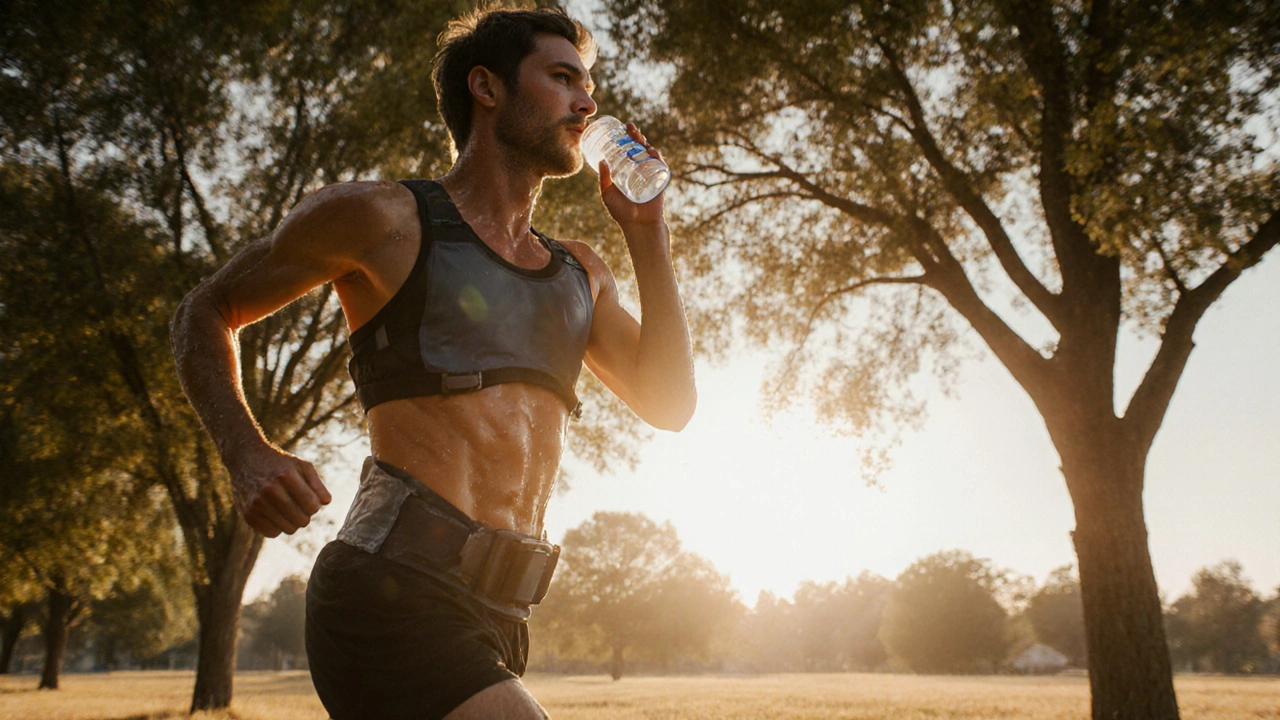When you're out running, your body loses water faster than you might think. Water intake while running, the amount of fluid you consume before, during, and after a run to maintain performance and safety. Also known as runner hydration, it’s not just about drinking when you’re thirsty—it’s about staying ahead of dehydration before it slows you down. Skip it, and you risk cramps, dizziness, or worse. Get it right, and you’ll feel stronger, recover faster, and finish your run without hitting a wall.
Most people think they need to chug gallons, but that’s not how it works. For runs under an hour, plain water is usually enough. Start hydrated—sip 16 oz of water 2 hours before you head out. Then, if you’re running in heat or humidity, take small sips every 15 to 20 minutes. For longer runs, especially over 60 minutes, your body loses more than just water. You lose electrolytes, minerals like sodium, potassium, and magnesium that help regulate muscle function and fluid balance. Also known as body salts, they’re what keep your muscles from cramping and your heart beating steady. That’s when a sports drink or a pinch of salt in your water helps. But don’t overdo it. Drinking too much water without electrolytes can flush out the salts your body needs, leading to hyponatremia—a rare but dangerous condition where your blood sodium gets too low.
How do you know if you’re drinking enough? Check your urine. If it’s pale yellow, you’re good. If it’s dark like apple juice, you’re behind. Weigh yourself before and after a run. Lose more than 2% of your body weight? You didn’t drink enough. Most runners lose 1 to 2 pounds during a 60-minute run—that’s about 16 to 32 oz of fluid. Replace it, but don’t try to match it exactly. Your body doesn’t need to be perfectly balanced mid-run. It just needs to stay in the safe zone.
Some runners swear by drinking on a schedule. Others wait until they’re thirsty. Science says listen to your body—thirst is a reliable signal for most people doing moderate runs. But if you’re racing, training hard in heat, or have a history of cramps, plan ahead. Carry a bottle. Use hydration stations. Know your sweat rate. Small changes here make a big difference in how you feel at the end.
What you’ll find in the posts below are real, practical tips from runners who’ve been there—how to hydrate without carrying a backpack, what drinks actually help, signs you’re under-hydrated even if you don’t feel thirsty, and why drinking too much can be worse than drinking too little. No fluff. Just what works.

Drinking water while running isn't optional-it's critical for performance and safety. Learn how much, when, and what to drink based on distance, heat, and sweat rate.
READ